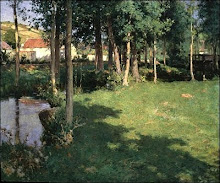Last night I watched a TV documentary about the life and work of the Australian artist Jenny Sages.
It was inspiring to learn that someone, who only took up a serious art career in her early 50s, went on to win many major awards in her chosen areas of landscape and portraiture.
The catalyst for her decision to take up fine art, full time, was a painting expedition to a remote area of the Australian outback. She said it was an epiphany for her; the landscape totally changing her palette and approach to making art. Her conversion was sudden and complete.
I've had a similar experience in central Australia - the colours there are indescribable opalescent pinks and greys. The desert regions, tend to lack the conventional elements of landscape subjects: trees, mountains and lakes, and lend themselves to abstraction.
Wanting to convey the complex textures of this ancient worn landscape, Sages took up the medium of encaustic (wax mixed with pigment). The melted wax is poured onto a board and spread over the surface, immediately creating interesting random textures and a kind of sculptural element. Sages then engraved the wax, gouging and scratching it with a variety of sharp implements, further adding to the texture. She then rubbed powdered pigment into the surface.
Though I have never used it myself, I have read that encaustic is compatible with the oil medium, and a great way to introduce texture into a landscape painting, whether it be representational or abstract.







.jpg)













+1900.bmp)